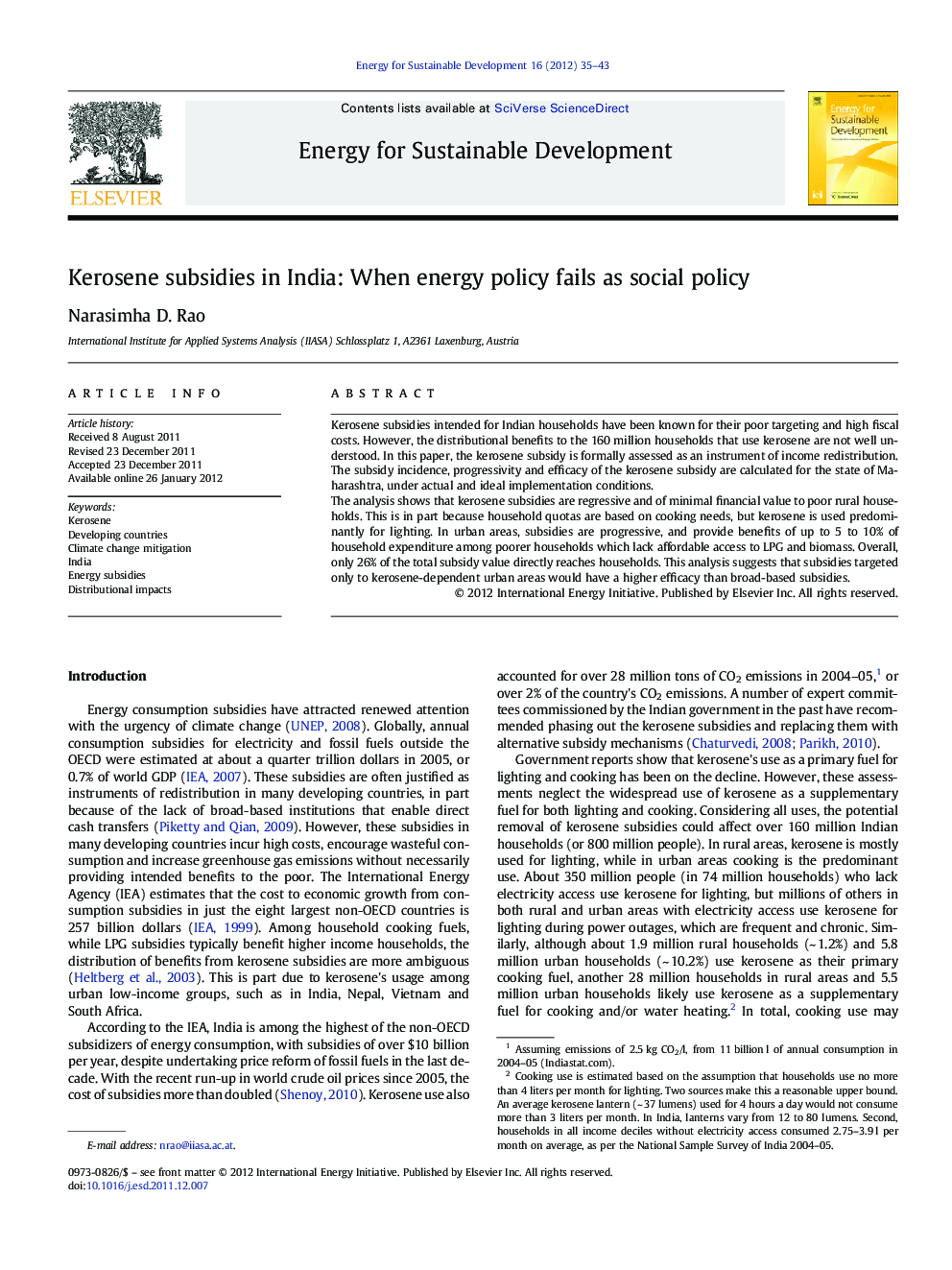| Article ID | Journal | Published Year | Pages | File Type |
|---|---|---|---|---|
| 1047261 | Energy for Sustainable Development | 2012 | 9 Pages |
Kerosene subsidies intended for Indian households have been known for their poor targeting and high fiscal costs. However, the distributional benefits to the 160 million households that use kerosene are not well understood. In this paper, the kerosene subsidy is formally assessed as an instrument of income redistribution. The subsidy incidence, progressivity and efficacy of the kerosene subsidy are calculated for the state of Maharashtra, under actual and ideal implementation conditions.The analysis shows that kerosene subsidies are regressive and of minimal financial value to poor rural households. This is in part because household quotas are based on cooking needs, but kerosene is used predominantly for lighting. In urban areas, subsidies are progressive, and provide benefits of up to 5 to 10% of household expenditure among poorer households which lack affordable access to LPG and biomass. Overall, only 26% of the total subsidy value directly reaches households. This analysis suggests that subsidies targeted only to kerosene-dependent urban areas would have a higher efficacy than broad-based subsidies.
► Kerosene is used primarily as a backup fuel in urban areas of Maharashtra, and occasionally as a primary fuel in the absence of affordable substitutes. ►Kerosene subsidies are progressive and material in urban areas, particularly where household lack access to affordable biomass and LPG. ►Only 26% of the kerosene subsidy value in Maharashtra directly reaches households, the rest of which gets diverted to distributors and retailers on the supply chain.
